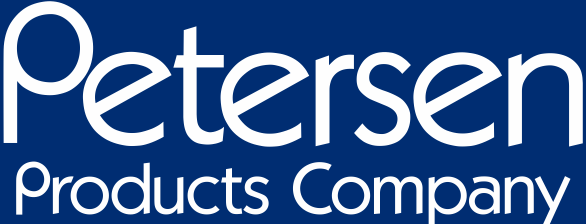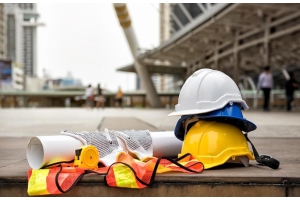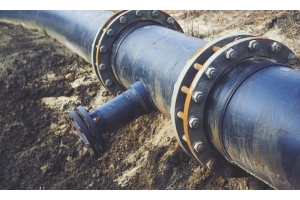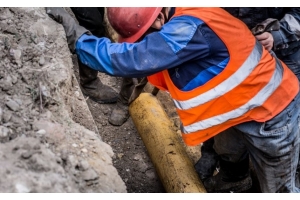Dewatering in Extreme Environment: Annular Seal Use in Deep Water Welding Repair


An innovative use of a Petersen Annular Seal in an extreme environment—almost one hundred feet down in the Gulf of Mexico—is interesting proof that the technology is effective in a great variety of situations, including those commonly found in municipal and industrial sewer and pipe networks.
"We used the seal as part of a life extension program for a tension leg platform set in over 3,200 FSW (feet of saltwater)," says Phoenix International Holdings Inc. (PIH) Dive & Welding Supervisor Nathan L. Martin. "It was a very unique situation, a type of welding repair that hadn't been attempted before, so far as I know. I proposed the use of an annular seal, made by Petersen Products, and it worked even better than expected. I think it might be the first use of a seal like this in an oil platform repair, and I don't know how we would have done this otherwise.”
Creating a Dry Welding Environment at Depth
As opposed to conventional platforms installed on rigid support structures, tension leg platforms (TLP) are used in very deep waters to anchor large, buoyant platforms to the sea floor by means of long cable-like tendons. Tendons are linked dynamically to the platform to allow limited vertical and lateral movement in response to currents and tides. Tendons are connected in various ways—in this case, the working platform is supported on huge pontoons, and tendons are linked to flex joint assemblies at pontoon ends, within a large chamber called a tendon porch. To repair a failing link, PIH needed to seal off and dewater a tendon porch so that welding could be done in a dry environment.
But why dry welding? After all, in popular conception, oil platform divers are experts in underwater welding in environments that are usually, well, wet; "Wet welds are often useful, but they're low in ductility and should usually be considered as temporary fixes," Martin explains. "That wouldn't work in this case; since there was no possibility of the TLP going to dry dock, and since the welding work had to be very high quality to meet ABS standards, we had to find a way to do dry welding at about 96 feet below sea level." 'ABS' is the American Bureau of Shipping, which certifies that oil platform repairs meet high safety and quality standards. Here, an ABS Surveyor would actually be on site during welding work to inspect and certify the permanent hyperbaric weld repair. To non-divers, 96 feet doesn’t sound especially deep. But in fact, it’s near the lower limits of underwater welding work, and even at a firm like PIH, with decades of oil platform repair experience, relatively few divers have welded below 50 FSW.
The tendon porch can be pictured as a boxy metal room enclosing the flex joint assembly, mostly watertight. But tendons enter the porch, to meet at the flex joint, through cylindrical openings at the top and bottom, and it was the annular space around the top tendon that needed to be sealed off so that the porch could be dewatered. Annular space, annular seal? It made sense to Martin. “For a welding habitat, in many situations, we’re often able to build or weld rigid structures as needed,” he explains. “But not here; since the connection between the tendon and the pontoon is dynamic, we needed some way to seal off the annular space between the tendon and the cylinder that was flexible. I did some research, and the Petersen Multi-Flex Annular Seal looked like a good possibility.”
The ring-shaped space between the tendon and cylinder didn’t vibrate or change rapidly, but its slow fluctuations were backed by many tons of weight and were more or less irresistible—forceful enough to bend or snap steel plates. Martin needed a flexible seal that could be wrapped around the tendon, maneuvered into position in the tendon porch cylinder, and then inflated into a donut or torus shape that would seal the annular space tightly enough to allow dewatering. In addition to flexibility, the seal used would have to lend itself to fast installation, since safe dive times at 96 feet down are limited.
Working with Petersen representative Matt Lukich, Martin designed an annular ring that would suit the situation—many of the inflatable rings and plugs Petersen makes are customized for specific situations, but this was one of the few intended for use in saltwater, at depth. The Multi-Flex Open Ended Seal (M-FOES) that resulted was simple in appearance, a 19-inch tall torus with a 14-inch inner opening and a 38-inch outer diameter. To avoid saltwater damage, Petersen made the seal of Ethylene-Propylene-Diene Monomer (EDPM) rubber, reinforced with ballistic nylon, and metal components (for hose connections) were made of stainless steel. Because the M-FOES had to be wrapped around the tendon, fastening straps were provided to join seal ends once it was in place. The seal formed is not perfect; some air can leak out, which was an advantage in this situation—PIH would be pumping nitrogen to the M-FOES continually anyway, and the imperfect seal would allow more deformation capacity to accommodate platform movement. But in the event, Martin says that very little leakage was observed.
Installation & Inflation
To transport the diver/welders and the support team installing the M-FOES and doing the repair work, PIH deployed a brand new, 240-foot “state of the art” dynamic positioning dive support vessel (DSV) outfitted with surface supplied diving and hyperbaric welding capabilities.
Diver/welders entered the porch through the gap between the bottom opening and tendon, and situated the annular seal in the top opening. Once in place, the M-FOES was filled from a dewar, a large cylindrical tank filled with (in this case) nitrogen, a neutral gas that would help eliminate the very real possibility of an underwater fire caused by welding in high-pressure environments. The dewar was equipped with a regulator to manage inflation pressures. This is tricky in dive operations; the M-FOES was rated for 20 psi, but at 96 feet below sea level, pressures are about 45 psi. So, inflation pressures were set at about 65 psi, and that figure held throughout the repair procedure.
This was surface supply diving, not SCUBA, meaning that the divers are continually connected to ‘umbilicals’ that supply air, communications, light, video feeds, and sampling tubes (to monitor habitat atmosphere), and also the nitrogen used to dewater the tendon porch welding habitat. “We found that even though the annular seal was not perfect, it was pretty close,” Martin says. “We’re used to that; welding habitats are rarely perfect, and keeping air supply constant to blow out water is usually part of the project. This was excellent compared to most habitats we’ve worked in—in fact, as soon as divers entered, their breathing exhaust began to dewater the chamber.”
With the tendon porch dewatered, welding work proceeded and was as ‘routine’ as underwater repair work can be. The Petersen M-FOES kept pressure and seal for the duration of the project, and divers had a safe, dry environment to work in. The repair was completed to ABS standards, and the ABS Surveyor on site said he was very impressed with the PIH team’s professionalism and skill. This difficult, unusual project was, in all ways, a success.
The PIH support team and diver/welders are infrastructure heroes of the kind whose work too rarely comes to public attention. Martin, in particular, deserves kudos for the innovative solution that made this difficult, vital repair possible. “To my knowledge, this repair is the deepest habitat weld ever done at Phoenix, 96 FSW at the bottom of the skirt. It is also the first time a TLP’s tendon porch has been rendered into a dry hyperbaric welding chamber.” To complete this unique project, a unique solution was needed, and it was Martin who proposed the Petersen M-FOES.
Most users of Petersen Products inflatable seals and plugs will not have nearly so much at stake—they won’t be contending with 96 feet of salt water, and the continued performance of an oil platform won't be at risk. But they will still be used in important, high-pressure situations, and it’s good to know the technology has been proven to work well, even when the challenges are extreme.
# # #
Angus W. Stocking, L.S. is a licensed land surveyor who has been writing about infrastructure since 2002.






